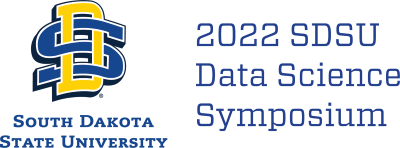Presentation Type
Poster
Student
Yes
Track
Other
Abstract
The main objective of this project is to provide the farmers/producers and small business owners with a data intensive information hub to better understand the market trends and patterns in an interactive way to help make informed decisions. This technology is part of a larger project that includes AI powered data services to provide users with decision making support for real time data solutions. Together with Natural Language Generation, there is a huge potential to deploy this technology. In this small demo of this hugely beneficial technology, we make use of the publicly available Open Data Services – ESR Data APIs to extract data in json format. The data in question is from USDA’s Export Sales Reporting program which provides a constant stream of up-to-date market information for 40 U.S. agricultural commodities sold abroad. The data is used to analyze the overall level of export demand, determine where markets exist, and assess the relative position of U.S. commodities in foreign markets. Although we are only focused on this data source for this poster presentation, it is only a representation of the potential of such a technology and will be scaled and combined with NLG to be deployed in the service of the public as a part of the aforementioned larger project. To retrieve the data, a Python script is written to make the API call to link the data to Tableau. The data is then used to develop interactive and dynamic visualizations in Tableau. While heaps of data piled up in row after row in multiple tables can be cumbersome and tedious to go through and find meaningful conclusions from, the same data in the form of representative visualization helps paint a vivid picture of the trends and patterns forming within the data. Even an untrained eye can spot a peak or a dip in a line chart or distinguish the market share percentage by simply looking at the size of a slice of a pie in a pie chart. Thus, the aim of this project is to help our target beneficiaries, i.e., producers, farmers, and small businesses to ultimately make data driven decisions delivered to them in an uncomplicated manner through simple visualizations while the technology runs the hard yards behind the scenes. After these simplifications of raw data to relevant visualizations, they are assembled to create dashboards ready for deployment. This can be done by sharing the dashboards to Tableau Public and further publishing them on a hosted web server for the users to access it easily.
Start Date
2-8-2022 1:00 PM
End Date
2-8-2022 2:00 PM
Deploying Live Dashboard Data using USDA Data APIs to inform farmers/producers
The main objective of this project is to provide the farmers/producers and small business owners with a data intensive information hub to better understand the market trends and patterns in an interactive way to help make informed decisions. This technology is part of a larger project that includes AI powered data services to provide users with decision making support for real time data solutions. Together with Natural Language Generation, there is a huge potential to deploy this technology. In this small demo of this hugely beneficial technology, we make use of the publicly available Open Data Services – ESR Data APIs to extract data in json format. The data in question is from USDA’s Export Sales Reporting program which provides a constant stream of up-to-date market information for 40 U.S. agricultural commodities sold abroad. The data is used to analyze the overall level of export demand, determine where markets exist, and assess the relative position of U.S. commodities in foreign markets. Although we are only focused on this data source for this poster presentation, it is only a representation of the potential of such a technology and will be scaled and combined with NLG to be deployed in the service of the public as a part of the aforementioned larger project. To retrieve the data, a Python script is written to make the API call to link the data to Tableau. The data is then used to develop interactive and dynamic visualizations in Tableau. While heaps of data piled up in row after row in multiple tables can be cumbersome and tedious to go through and find meaningful conclusions from, the same data in the form of representative visualization helps paint a vivid picture of the trends and patterns forming within the data. Even an untrained eye can spot a peak or a dip in a line chart or distinguish the market share percentage by simply looking at the size of a slice of a pie in a pie chart. Thus, the aim of this project is to help our target beneficiaries, i.e., producers, farmers, and small businesses to ultimately make data driven decisions delivered to them in an uncomplicated manner through simple visualizations while the technology runs the hard yards behind the scenes. After these simplifications of raw data to relevant visualizations, they are assembled to create dashboards ready for deployment. This can be done by sharing the dashboards to Tableau Public and further publishing them on a hosted web server for the users to access it easily.

